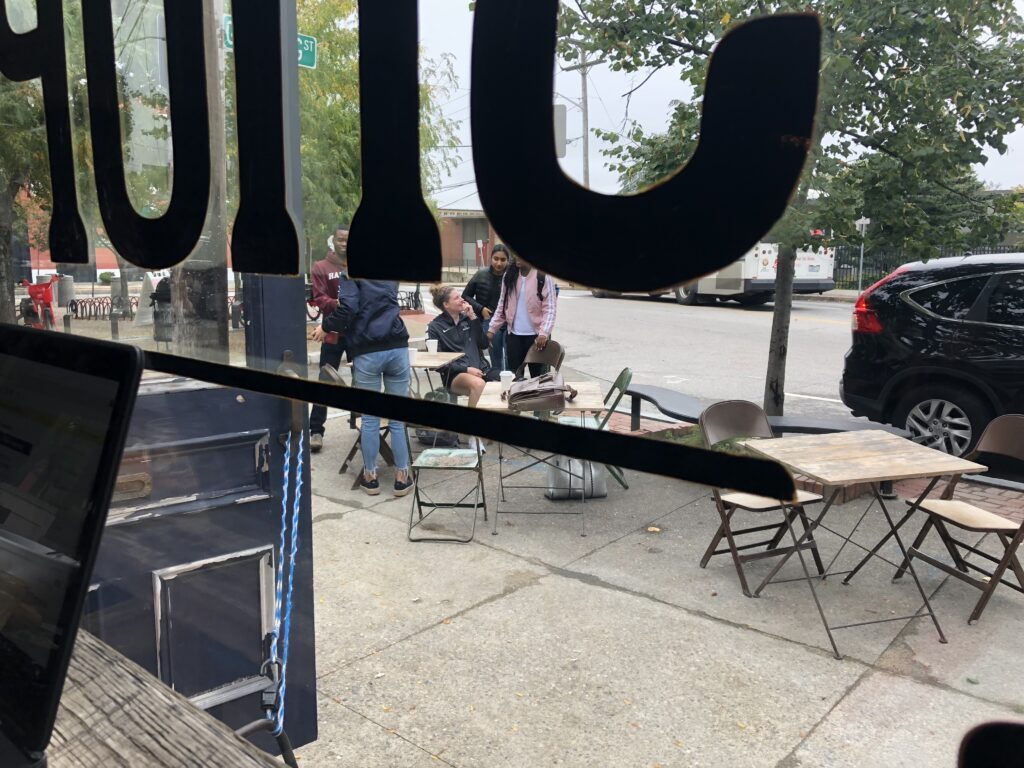
How does the flâneur come back to her city after a war is over, after a breakup, an illness, a chasm, a separation of any sort? When I’m walking my little city (really more of a village), I find that taking stock of sites of loss is too risky. Instead, I keep my feet on the ground and eye attuned to what remains, what’s there. It goes without saying that my eye also registers what’s not there — the invisible makes a strong mark.
What delights me is the people who pop up unexpectedly — faces whom I knew as part of a daily geography, key to the routine and habits that made up a 24-hour-day. If I lived in a real village, they would sell cigarettes and phone cards in the tabac, or be handing off a baguette in exchange for a few coins, or be selling fresh fish or putting new soles on my shoes. In the urban village, they could be the doorman at the apartment building, or be the super, the bus driver, gym trainer, the face at the entry to school.
Yesterday, it was the dyed-blond barista who popped up in a café window, bright with fresh shining platinum hair (a young Debbie Harry type), no new nose rings, maybe less armor in her expression. I was surprised at how familiar she was when I’d known her so little, and from her expression, she felt the same. Shock of the old. There was none of the earnest, hour-long covid confessional in the simple “how are you?” — but there she was, solid in her Doc Martens, twisting the espresso handles, all vibrant presence.
I haven’t seen the guy with the existential crisis that I could identify by his question-mark posture, seen from the front or back. Or a homeless woman who perched on a particular bench, near a stone portico. People are repeopling cities that were glass and brick holders. The little shocks of familiar become the eloquence of daily continuation where we find ourselves now.
